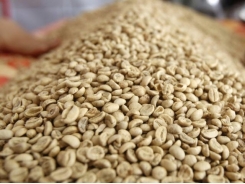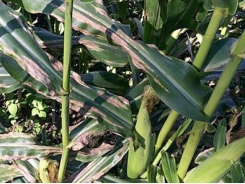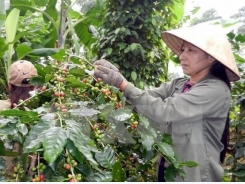Agriculture makes up exports imprints in 2017

Last year exports of fruit and vegetables suddenly surpassed crude oil to reach a value of up to US$3.5 billion, up 43.1%. (Credit: NDO)
Export achievements in 2017 were encouraging amidst declining minerals and crude oil exports thanks to the strong growth in telephone, electronic components, and especially the agricultural sector, made up for the gap left by the mining industry’s exports.
For the first time in history, exports marked a remarkable achievement in 2017 as they exceeded the US$200 billion benchmark with a total value of US$213.77 billion, up 21%. 2018 is also expected to be a good year for export targets.
Typically, the seafood industry has returned impressively earning the country US$8.4 billion in 2017 (up 18.5% from the previous year), while wood and furniture brought in US$7.6 billion (up 9.2%), rice exports reaped US$2.6 billion (22.7%), and cashew nuts earned US$3.5 billion (23.9%). Most notably, fruit and vegetables surpassed the long standing crude oil in terms of export value at US$3.5 billion, up 43.1%.
It is time to further improve the agricultural sector’s role. The good results in 2017 show that Vietnam has potential to develop a modern agricultural sector with higher added value and higher contributions to the GDP compared to the quite modest contribution level at present.
For fruit alone, the recent encouraging results have opened up opportunities for the industry’s accelerated growth, especially its exports to the US and European markets. Positive news arrived as after ten years of negotiations, the first batch of star apple fruit from Tien Giang province has been allowed to export to the US, opening up great business opportunities for enterprises and farmers in the Mekong Delta.
Star apple fruit shipments to the US have to meet high agricultural practice standards and have been strictly inspected by the US Animal and Plant Health Inspection Service. After meeting all of the requirements, the price of this high quality fruit is up to VND25,000-30,000 per kg and will be doubled when sold in the US market.
Vietnamese fruit and vegetables are currently exported to more than 40 countries and territories around the world, including selective markets such as the US, Australia, New Zealand, Chile, Japan and the Republic of Korea. The sector’s target is to earn approximately US$4.5 billion in exports by 2020 and nearly double that by 2030.
The strong return of shrimp and fish exports is also a remarkable phenomenon. In 2016, this industry encountered challenges in the face of serious droughts and the Formosa maritime environmental incident. However, in 2017, thanks to more favourable weather and tighter production processes, the fisheries sector generated great success.
The largest contributor to seafood exports in 2017 was shrimp with a growth of over 21%, as shrimp exports were valued at US$3.8 billion. Tra fish exports contributed US$1.8 billion, up nearly 4% compared to 2016, while exports of tuna and squid also reached nearly US$600 million, up 16% and 42% respectively.
Remarkably, in seafood exports in 2017, China surpassed the US as Vietnam's largest import market for tra fish and shrimp. It is expected that Vietnam's neighbouring market will continue to grow satisfactorily in the coming years due to the increased demand for high quality seafood in China thanks to improved incomes and its changing trend to a consuming economy.
The spectacular improvement of Vietnam’s agricultural sector in 2017 is generally a very important event, thereby encouraging further investment from leading corporations in hi-tech agriculture. Of course, the export target this year will surely face challenges amidst the increased trade protectionism and anti-dumping measures from a number of developed markets, such as the US and Europe, against Vietnamese commodities such as shrimp and tra fish.
According to Deputy Minister of Agriculture and Rural Development, Ha Cong Tuan, 2018 is identified as a pivotal year, which is important in the implementation of the sector's five-year plan during 2016-2020, targeting a growth rate at about 2.8-3.0% and an export turnover of US$36-37 billion.
It is time for the relevant departments, sectors and local authorities to take measures in removing barriers and create a favourable environment for businesses, while actively reporting on new market policies to help businesses reduce their risks. Another important orientation is that the State needs to maintain or reduce credit interest rates to strengthen the financial capacity of enterprises.
For their part, agricultural businesses should pay more attention to brand building, quality improvement, the application of modern technology and completing the production and distribution chain to improve business efficiency and increase competitiveness in the international markets
Có thể bạn quan tâm
Phần mềm

Phối trộn thức ăn chăn nuôi

Pha dung dịch thủy canh

Định mức cho tôm ăn

Phối trộn phân bón NPK

Xác định tỷ lệ tôm sống

Chuyển đổi đơn vị phân bón

Xác định công suất sục khí

Chuyển đổi đơn vị tôm

Tính diện tích nhà kính

Tính thể tích ao hồ




 Indonesia to import rice from Việt Nam
Indonesia to import rice from Việt Nam  Agriculture sector targets 40 billion USD in export…
Agriculture sector targets 40 billion USD in export…